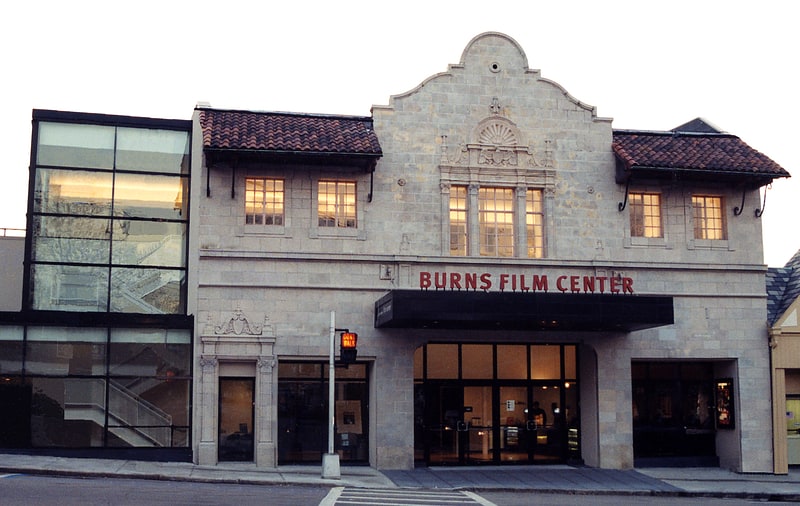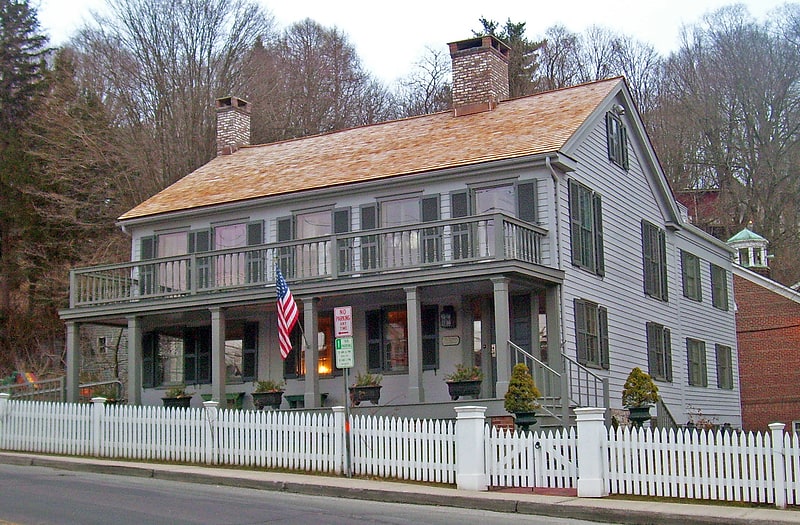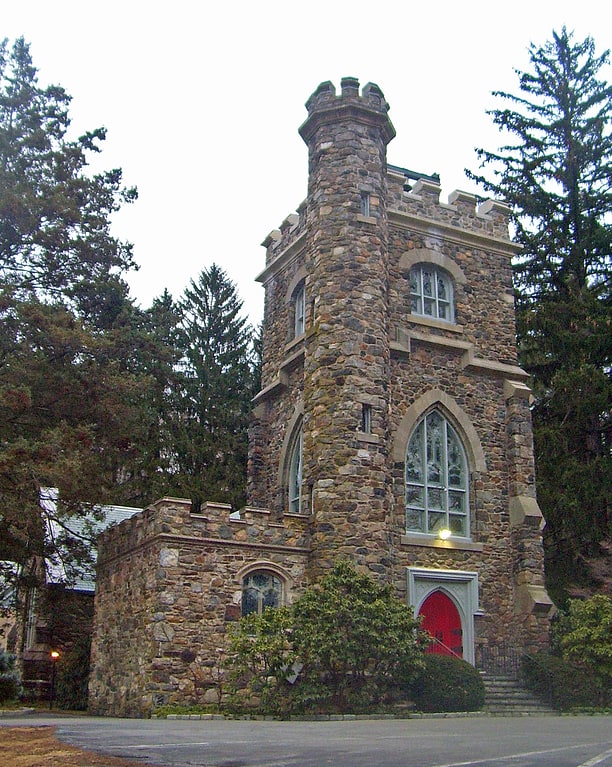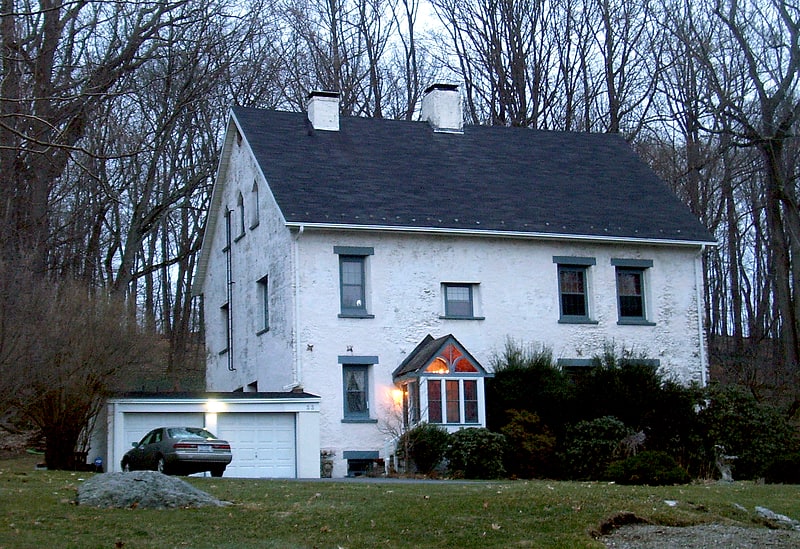Discover 4 hidden attractions, cool sights, and unusual things to do in Chappaqua (United States). Don't miss out on these must-see attractions: Jacob Burns Film Center, Greeley House, and Church of Saint Mary the Virgin. Also, be sure to include Rehoboth in your itinerary.
Below, you can find the list of the most amazing places you should visit in Chappaqua (New York).
Table of Contents
Jacob Burns Film Center

Theater in Pleasantville, New York. The Jacob Burns Film Center is a nonprofit cultural arts center located in Pleasantville, New York. It occupies the old Rome Theater, a Spanish mission-style theater built in 1925.
Along with independent and documentary films, the center hosts a variety of special events, including discussions with filmmakers, critics and people from the industry following some screenings. The New York Times has credited the theater with helping to revitalize the downtown area of Pleasantville[1]
Address: 405 Manville Rd, 10570-2825 Pleasantville
Greeley House

Museum in Chappaqua, New York. The Greeley House is located at King and Senter streets in downtown Chappaqua, New York, United States. It was built about 1820 and served as the home of newspaper editor and later presidential candidate Horace Greeley from 1864 to his death in 1872. In 1979 it was listed on the National Register of Historic Places along with several other properties nearby related to Greeley and his family.
Built in the 1820s as a typical small farmhouse, it was expanded in the mid-19th century. Greeley, editor of the New-York Tribune, settled in Chappaqua shortly before the Civil War in the mid-19th century, living there with his family primarily during the summer. After a mob of citizens opposed to Greeley's abolitionist editorial stance threatened his wife at their earlier "House in the Woods," Greeley bought the farmhouse and moved his family there, near the hundred acres (40 ha) where he ran a small farm and practiced experimental agricultural techniques.
After the war, Greeley built a mansion called "Hillside House" to live in, but died along with his wife shortly after the 1872 presidential election, where he ran on the Liberal Republican line against incumbent Ulysses S. Grant, so his children lived there instead, pioneering the suburban lifestyle that was later to define Chappaqua and its neighboring communities. Both of Greeley's other houses burned down later in the 19th century, leaving the Greeley House the only one extant.
It, too, was almost demolished after falling into serious neglect in the early 20th century. After its restoration in 1940, it was used as a restaurant and gift shop. Following another restoration effort in the early 21st century, it is now the offices of the New Castle Historical Society.[2]
Address: 100 King St, 10514-3433 Chappaqua
Church of Saint Mary the Virgin

The Church of Saint Mary the Virgin is an Episcopal church located on South Greeley Avenue in Chappaqua, New York, United States. It was built in the early years of the 20th century on land donated by Horace Greeley's daughter Gabrielle and her husband, himself a priest of the Episcopal Church. In 1979 it was one of several properties associated with Greeley in Chappaqua listed on the National Register of Historic Places as the Church of Saint Mary Virgin and Greeley Grove.
During his 1872 campaign for President, in which he ran unsuccessfully as the first and only nominee of the Liberal Republican Party against eventual winner Ulysses S. Grant, Greeley, then editor of the New York Tribune, had hosted a massive lunch and reception on the property. He had planted the large grove of evergreen trees 16 years earlier as a windbreak for his farm, part of his campaign to promote reforestation and conservation. After the election but before the counting of the electoral votes, Greeley died, and Gabrielle inherited the farm, which at the time covered most of what is now downtown Chappaqua.
When Gabrielle's daughter Muriel died in childhood in 1903, she and her husband, The Rev. Dr. Frank Clendenin, built the church as a private chapel. Architect Morgan O'Brien designed a stone Gothic Revival building that closely copied the 15th-century Church of Saint Mary the Virgin in Monken Hadley, England. Two years later, an original stained glass window from that church was given to the Chappaqua copy. In 1916 the Clendenins transferred it to the Diocese of New York, with some stipulations in the deed, among them that they and their children remain buried in a small plot at the rear of the church. It has since become a parish church; its annual Strawberry Festival is one of Chappaqua's most popular events.[3]
Rehoboth

Building in Chappaqua, New York. Rehoboth is a historic former barn located on Aldridge Road in Chappaqua, New York, United States. It is a concrete structure that has been renovated into a house with some Gothic Revival decorative elements. In 1979 it was listed on the National Register of Historic Places.
It was designed and built in the mid-19th century by newspaper editor and activist Horace Greeley as one of the agricultural experiments he dabbled in, testing whether concrete would make a good building material for farms. It was one of the first concrete structures in the country, and the first concrete barn. Greeley was so satisfied with the result he predicted that he would be remembered for it if nothing else.
Two decades after Greeley's death, his daughter Gabrielle and her husband, the Rev. Frank Clendenin, pastor of a New York City Episcopal church, commissioned architect Ralph Adams Cram to remodel it into their house, which he named Rehoboth. They lived there for the rest of their lives, the remodeled house becoming one of the centers of Chappaqua's social life as the community completed its metamorphosis from country town to suburb. It has remained a private home since then.[4]